Animals that live on this planet with us present one of the greatest threats to mankind. Even though some of them seem unassuming, they wander the planet and are to blame for a great deal of human fatalities and wildlife-related injuries. Since many of them wouldn’t be so deadly at first appearance, it’s critical to be able to identify many of them. Discover the top 10 most dangerous animals in the earth as you read this article.
Box Jellyfish:

Where the Indian and Pacific oceans meet, box jellyfish are frequently seen floating. They are regarded as the deadliest marine animal in the world despite having no brains and a top speed of only 5 miles per hour. They have ten-foot-long tentacles that are covered in thousands of stinging cells whose poison simultaneously assaults the heart, neurological system, and skin cells. Even while there is antivenom, only a small percentage of the hundreds of people that were stung ever make it to a hospital.
Golden Toxin Dart Frog:

These dangerous frogs contain a poison called batrachotoxin and live in a tiny area of rainforests near Colombia’s Pacific coast. One frog can kill ten men who are completely grown with this toxin, while a fully grown human can be killed with just two milligrams, or about the size of a pinhead. Since the glands are located just below the frog’s skin, touching one will send you to the hospital’s emergency room.
Cone Snail:
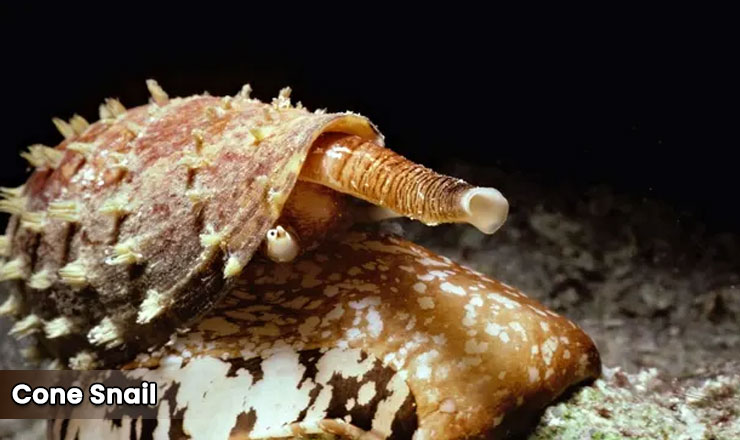
Whatever the beauty of their brown and white striped shells, never attempt to pick one up. These beautiful exteriors conceal harpoon-like teeth that are filled with conotoxin, a poison. Since there is presently no antivenom for this venom due to its complexity, you should attend to the emergency department right away if you get bitten. The moniker “cigarette snail” comes from the toxin, which prevents nerve cells from being able to communicate. Hence, you’ll only have enough time for one more cigarette before dying.
Cape Buffalo:
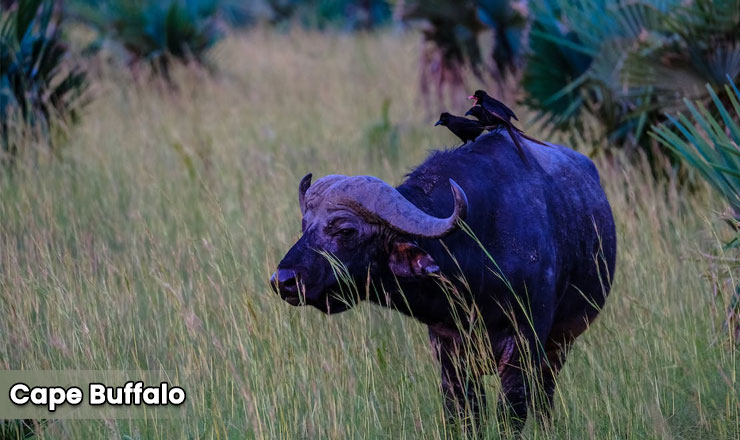
These animals are mostly found in South Africa and Sub-Saharan Africa, and they are relatively calm when left alone. The issue is that many visitors to Africa who go on safari will see these animals and be mesmerized by their magnificence. They frequently move in herds, mostly in the late afternoon and early morning when they start grazing. They are over a tonne in weight and stand over 6 feet tall. However, if they sense danger, they may attack, frequently in packs, circling and attacking their victim at 35 mph. They are the species that causes the most fatalities on safaris, gaining the moniker “Black Death.”
Pufferfish:
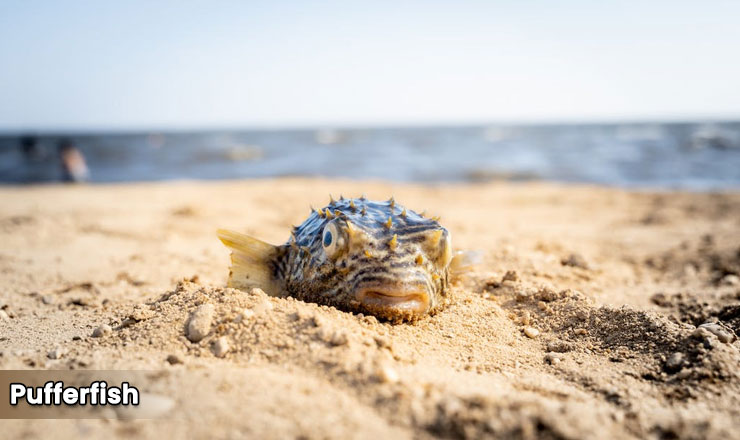
Found in tropical oceans near East Asia is the pufferfish (Japan, China, and the Philippines) Pufferfish are incredibly toxic creatures whose tetrodotoxin toxin is thought to be 1,200 times more lethal than cyanide. The skin, muscles, liver, and gonads of the fish contain this very lethal toxin. Pufferfish are still regarded as a delicacy in Japan and can only be prepared by trained, certified chefs despite this, or perhaps even because of it. Several people pass away each year just from eating it, despite all of this practice and preparation.
Black Mamba:

The Black Mamba, which is common in savannas and in south and east Africa, is not the most poisonous of all snakes. But when you think how quick and aggressive it can be, it doesn’t matter. When attacked, the snake, which can slither at speeds of up to 12.5 miles per hour, would hunt its prey, making it nearly impossible to flee one of these animals on foot. The toxins in one bite are potent enough to kill ten people, and the snake will attack repeatedly out of instinct before fleeing. You then have 20 minutes to administer the antivenin before you pass away.
Crocodile in Salt Water:

More people die from saltwater crocodile attacks each year than from shark attacks due to their viciousness and fearsomeness. These creatures, which are found in the Indo-Pacific and occasionally venture as far south as Australia, have bites that are comparable to those of Tyrannosaurus Rex. Although they are known as “saltwater” crocodiles, these animals can swim in freshwater as well, making them swift, frightful, and extremely dangerous.
Mosquito:

The mosquito is one of the tiniest and second-deadliest animals on our list and is found all over the earth. These bothersome insects, like the Tsetse fly, spread a number of terrible diseases, including the Zika virus, West Nile virus, encephalitis, elephantiasis, yellow fever, dengue fever, and chikungunya, which kills over 725,000 people year and affects close to 700 million. An illness spread by a mosquito could affect over half of the world’s population, according to the World Health Organization.
Tsetse Fly:
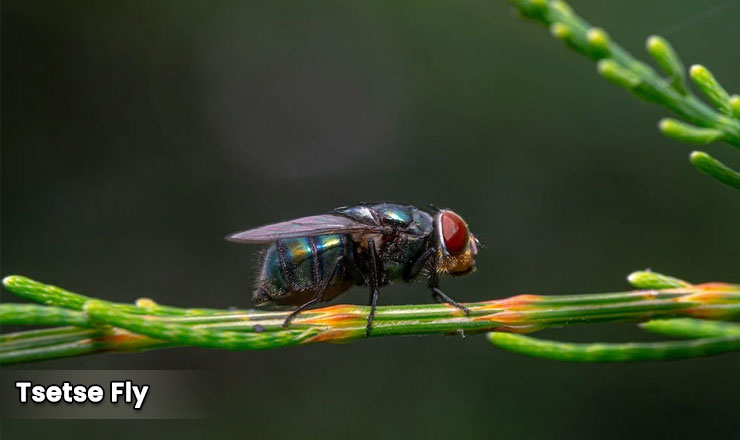
Only reaching the size of a typical housefly, the tsetse fly is considered as the most dangerous fly in the world. Despite its small size, this fly from Sub-Saharan Africa is recognized as the most dangerous in the world. They consume human blood like mosquitoes and transmit diseases like the parasite trypanosomes. The sickness known as African Sleeping Sickness, which affects the neurological system and interferes with sleep cycles, is brought on by this parasite. This disease, which can be fatal without treatment, has neither a vaccination nor a vaccine. Wearing neutral-colored clothing and avoiding bushes throughout the day are precautions.
Stonefish:
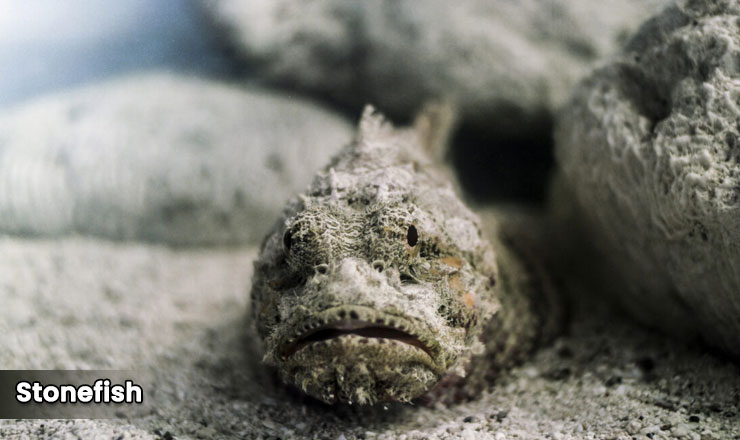
The most poisonous fish known to humans, the stonefish, is small and straightforward to overlook. Stonefish, after all, got their name from the way they looked. They sat still and blended with the seafloor, where an unwary foot could easily step down on their dorsal fins, primed and prepared to attack with strong neurotoxins. The unluckiest clodhoppers step forcefully, applying more pressure and increasing the amount of venom that is injected; they may also activate the stonefish’s lachrymal sabre, a secondary defence mechanism. Stonefish venom can be fatal within an hour, so victims must seek antivenom right away. In the interim, they should apply water heated to over 113 °F (45 °C) to denature the venom.
Humans:

We, the species known as humans, are ranked first. Despite how hazardous each animal on the list is, we are actually the greatest threat to ourselves. Even though we are currently experiencing one of the most peaceful periods in human history, random violence and attack nonetheless result in many tragically short lives. Over the years, war has killed anywhere from 150 million to 1 billion people. Animals have more to fear from us than from them because we have the ability to terminate all life on Earth through nuclear war.
You May Also Like:
10 best food in the world – Most Delicious Food in World
These Are The Smallest Animals On The Planet (Beside Humans)